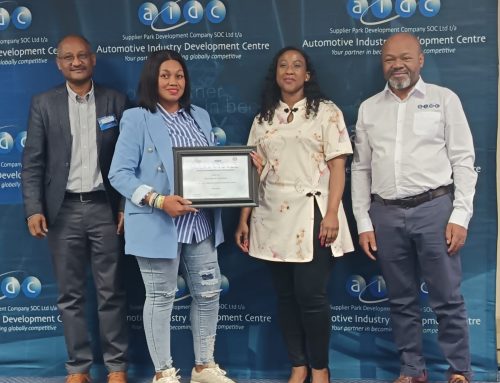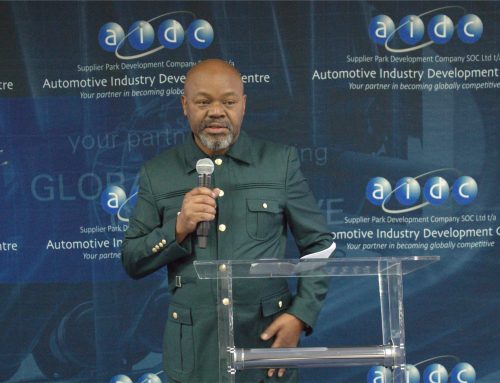Ford South Africa has created around 1 200 incremental jobs by adding a third shift as part of the $1.05-billion investment in its Silverton Assembly Plant.
The local workforce has increased from the current 4 200 Ford South Africa employees to approximately 5 000, along with an additional 440 jobs at the plant’s on-site service provider. This takes the total Ford employees at the Silverton facility to over 4 100, with 850 people employed at Ford’s Struandale Engine Plant in Gqeberha (formerly Port Elizabeth). The reintroduction of the third shift will support expanded production of the current Ranger pickup to meet strong local and international demand. It will also enable an increased production capacity for the next-generation Ranger, starting in 2022.
This is the first use of a three-shift production schedule since it was implemented as a temporary measure during the second half of 2019 to fulfil higher production volumes required for the current Ranger – and will see the Silverton Assembly Plant operating around the clock, five days a week.
“Our key objectives with the $1.05-billion investment in the Silverton Assembly Plant and our supplier facilities are to expand our production capacity, and to introduce the most advanced technologies and systems as we modernise our manufacturing operations to bring them in line with the best in the world,” says Ockert Berry, VP Operations at Ford South Africa.
“Crucially for our communities, the higher production volumes mean more jobs, and we are delighted to add the 1 200 jobs that now fill the third shift from the beginning of September,” Berry says. “We first ran three shifts and 24-hour production for a limited period in 2019 to meet higher volume targets, and we are delighted to reinstate this extra shift as a permanent fixture as we ramp up our production.
“The employees that were brought on board and trained in 2019 were given first option to take up the new positions, and it is fantastic to see our Ford family growing as we head into the most exciting and dynamic chapter of Ford’s history in South Africa yet as we prepare for the next-generation Ranger in 2022,” Berry adds.
With the additional shift, the Silverton Assembly Plant will be capable of producing up to 720 vehicles per day, or 240 units per shift – which equates to one new Ranger coming off the line every two minutes. Two-thirds of the Rangers produced are exported to more than 100 global markets, including Europe where it is the top-selling pickup. The balance is sold in South Africa, regularly achieving overall top-three sales.
When the next-generation Ranger is launched in 2022, the facility will have an annual installed capacity for 200 000 vehicles – which is nearly double the 110 000 units it was capable of when production of the current Ranger pickup began in 2011, and a significant increase from the 168 000 units prior to the commencement of the latest investment.
Modernised, more efficient, higher-volume assembly line
To realise the new production targets, the Silverton plant’s assembly line has undergone an extensive transformation focused on wide-ranging upgrades to modernise the facility, enhance efficiency and improve production quality throughout the plant. Additionally, Ford is currently constructing an all-new Body Shop and Stamping Plant on the Silverton site, along with a new in-house Frame Line in the adjacent Tshwane Automotive Special Economic Zone (TASEZ).
Most of the assembly line changes were completed during a strategic seven-week shutdown of the plant in July and August this year, with construction and engineering teams swooping in to remove the old equipment and install the latest technologies and production systems.
“The seven-week shutdown enabled us to implement the largest and most comprehensive upgrade and modernisation of the Silverton Assembly Plant to date,” says Plant Manager Tim Day. “Our entire focus is on being world-class and comparable with the best Ford manufacturing plants globally. This is essential as we work towards delivering the required production volumes and achieving the highest quality levels for our customers.
“The biggest change has been a total redesign of the plant layout,” Day says. “The progressive evolution of the plant saw it growing organically over the years, which resulted in a less-than-ideal layout. Accordingly, we’ve completely reworked the assembly line to maximise efficiency through the vehicle assembly and validation processes.
“We’ve removed roughly a kilometre and 20 transactions out of the previous assembly line flow by eliminating the back-and-forth movement of vehicles within the plant during the various stages of production,” he adds. “This will result in all of the manufacturing processes and quality checks being performed in the zone where it’s manufactured, contributing towards greater efficiency and more effective quality control before the vehicle moves to the next station.”
Investing in people
Extensive training has been completed with the existing and new Silverton Assembly Plant employees and suppliers to facilitate the smooth transition and implementation of the new technologies and systems. “People are our most important and valuable asset, so along with the plant upgrades and associated training, we have also invested in the aesthetics and practical elements of the entire facility to turn it into a more modern, relaxed, respectful and welcoming work environment,” Day says.
“It’s important that we look after employees’ overall wellbeing, ensuring that they feel comfortable and motivated to come to work and deliver their best. Accordingly, we are revamping existing canteens and installing new facilities, and building smaller, modern kitchens in many of the areas that employees can use at their convenience to make the plant more people friendly.
“This is a really exciting time for Ford in South Africa, and for the country as a whole,” Day concludes. “There’s a real buzz around the employees, suppliers, construction contractors and the surrounding communities as the far-reaching investment and rapid changes we announced for the Silverton Assembly Plant and the Tshwane Automotive SEZ are transformed into reality. People are seeing and appreciating the prospects for growth and economic upliftment, which will not only impact them, but will have a long-lasting effect on their children and future generations.”
Story Supplied by FORD MOTORS SA
Automotive Industry Development Centre’s Incubation Centre at FORD
The AIDC’s Automotive Incubation Centre at Ford currently houses companies who supply automotive components directly to the FORD production line for the Ford Ranger. Each of the incubatees are subcontracted to a Tier 1 component supplier who then provides technical mentoring as required for the duration of the incubation programme. The AIDC’s incubation centre at FORD is the predecessor to the facility at NISSAN SA.







